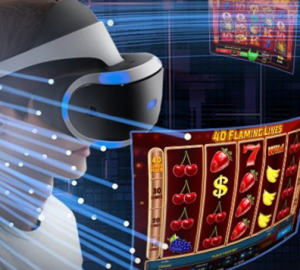The health and fitness industry, a multi-billion-dollar global enterprise, is often perceived as a realm of well-being and positive lifestyle changes. However, beneath this wholesome veneer lies a complex and darker history intertwined with organized crime.
This article delves into organized crime’s historical influence on the health and fitness industry, specifically the Mafia, exploring how their involvement has shaped current practices and perceptions. It provides a chronological examination, tracing the mob’s incursion from the early 20th century to the present day, highlighting the long-lasting impact on the industry’s ethical, operational, and regulatory frameworks.
Early Connections: The 1920s to 1950s
- The Prohibition Era and Physical Culture: During the Prohibition era, the Mafia’s influence seeped into various businesses, including the burgeoning health and fitness sector. Notably, they capitalized on the era’s physical culture movement. Gyms and fitness clubs often served as fronts for illegal activities, including bootlegging. This era also saw the emergence of ‘muscle men’ often employed by the mob for intimidation and enforcement, further linking physical prowess with organized crime.
- Control Over Sporting Events: Boxing, a significant component of the fitness industry at the time, saw substantial mob involvement. Influential crime figures manipulated fight outcomes, controlled boxers’ careers, and utilized these events for money laundering and gambling. The mob’s control over boxing corrupted the sport and impacted the way athletes trained and operated, with many gyms becoming breeding grounds for potential boxers who could be influenced or controlled by mob interests.
Expansion and Diversification: The 1960s to 1980s
- Gym Ownership and Money Laundering: The Mafia’s presence in gym ownership became more pronounced. Gyms were used for money laundering operations due to their cash-intensive nature. This period saw the rise of gym chains, some financed or influenced by mob money. Infiltrating these legitimate businesses allowed the mob to launder large sums of money under the guise of legitimate profits, effectively blurring the lines between lawful and unlawful business practices.
- Infiltration into Bodybuilding and Supplements: The mob’s influence extended to bodybuilding competitions and the nascent supplements industry. They exercised control over event organization and supplement distribution channels, often using these avenues for illicit financial gains. This control also extended to manipulating competition outcomes and pressuring athletes into using certain supplements, which were sometimes channels for distributing illegal substances. In contrast to these historical practices, the supplement industry has seen significant advancements and regulatory reforms. For those interested in the latest and safest options in this domain, experts have published an insightful article on the best legal steroids in 2024, offering a comprehensive guide to safe and legal alternatives in the modern fitness landscape.
Modern Dynamics: The 1990s to Present
- The Shift to Legitimate Business Operations: There was a noticeable shift as law enforcement intensified crackdowns on organized crime. Mob-affiliated entities in the fitness industry moved towards more legitimate business practices while maintaining influential networks. This shift was partly due to increased scrutiny and the desire to maintain profits without the risks associated with overtly illegal activities.
- Continued Influence in Specific Areas:
- Equipment Supply: Some companies linked to the mob still have a foothold in the manufacturing and distributing fitness equipment. This continued presence is often masked by layers of corporate structures, making it difficult to trace direct mob involvement.
- Real Estate: Controlling prime real estate for gym locations remains a subtle yet significant aspect of mob influence. They leverage their historical connections and capital to secure and control lucrative gym locations.
The Impact on Industry Standards and Practices
- Ethical and Safety Compromises: The involvement of organized crime has occasionally led to ethical and safety compromises in gym operations and supplement manufacturing, prioritizing profit over consumer well-being. This has included the distribution of unregulated supplements and the overlooking of safety standards in gym facilities.
- Regulatory Responses and Industry Reform: This historical context has spurred regulatory bodies and industry leaders to implement stricter standards and reforms to dissociate the industry from its past criminal associations. These measures include enhanced scrutiny of supplement ingredients, stricter licensing for gyms and fitness professionals, and increased transparency in business operations.
Conclusion
The mob’s influence on the health and fitness industry is an often-overlooked aspect of its history. Understanding this influence is crucial for comprehending current industry dynamics and ensuring a transparent, ethical future.
This historical perspective underscores the need for continued vigilance and reform to maintain the integrity of an industry vital to public health and well-being. As we move forward, it is essential to remain aware of this history to prevent the recurrence of such influences and to foster an environment that prioritizes the health and safety of consumers.
- Online casino’s safeguards against crime - January 8, 2025
- The Best Slot Games For Low-Budget Play - December 14, 2024
- From Mob Mentality to Digital Thrills - December 10, 2024








